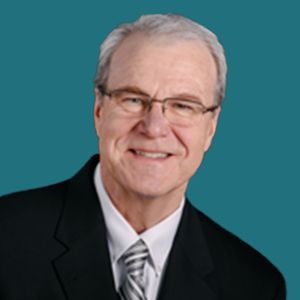Advances in CRISPR/Cas9 Gene Editing Will Be Highly Represented in ASGCT Presentations This Year
Terence R. Flotte, MD, the vice president of ASGCT, discussed what attendees can expect at the ASGCT Annual Meeting this year.
Terence R. Flotte, MD
Credit: UMass Chan Medical School

This week, experts and other interested parties from across the fields of gene therapy and cell therapy will gather at the American Society of Gene and Cell Therapy (ASGCT) Annual Meeting. The Meeting, which will be held this year from May 7 to 11 in Baltimore, Maryland, is the largest conference dedicated wholly to sharing research in these advanced modalities.
In anticipation of the Annual Meeting, CGTLive® sat down with Terence R. Flotte, MD, the vice president of ASGCT and the provost and executive deputy chancellor of UMass Chan Medical School, to get his perspective on what attendees can look forward to this year. Flotte also discussed major themes in the field of gene/cell therapy in general as of late and the need to improve access to these therapeutics for the patients who need them most.
CGTLive: For those who don't know, what is the ASGCT Annual Meeting and what makes it unique?
Terence R. Flotte, MD: ASGCT is the largest society in the world focused on Gene and Cell Therapy and the Annual Meeting is the largest meeting in the world devoted to this topic. We expect more than 7,000 to 8,000 attendees at the Annual Meeting this year in Baltimore.
What can attendees of this year's meeting expect and look forward to?
The Annual Meeting features invited keynote speakers who present breakthrough science related to gene therapy and new developments of clinical gene and cell therapy products. The keynote speakers this year include Dr. Beverly Davidson, a pioneer in AAV gene therapy for genetic diseases, Phil Gregory, an industry leader in gene editing, Kevin Campbell one of the key physician scientists who unlocked our understanding of muscular dystrophies, and Charles Murry, a cardiology research developer of stem cell-based treatments to strengthen ailing heart muscle.
In addition to the keynote speakers, we received nearly 2,000 scientific abstracts. At the Annual Meeting we will hear from many scientists who submitted abstracts describing the new findings that they plan to present in posters or short talks to other scientists within specific areas of gene and cell therapy. These are often the most exciting parts of the Annual Meeting. The CRISPR-based gene editing projects continue to garner great interest as the applications of that technology broaden more and more.
Is there anything that you personally are most looking forward to at the Meeting this year?
I, like many of my colleagues, look forward most to being able to hear about science from our colleagues across the world in academia and industry. The opportunity to network with colleagues in the field is also a high point.
Can you discuss some of the major themes/developments in the gene/cell therapy space in general as of late?
As the number of gene therapy and gene editing products that are approved by the FDA and the European Medicines Agency has increased there has been a renewed focus on the safety of gene therapy. Some of the safety aspects will require longer term follow-up, so the data continues to emerge.
Newer and better forms of CRISPR/Cas9 for gene editing, base editing, and prime editing are also of great interest. This aspect of the field is moving forward very quickly.
Is there anything else you would like to share with the audience?
My own perspective is that we as leaders in the field should begin to focus more on access to gene therapy. This technology was made possible with a great deal of public funding and as such, we have a responsibility to make this technology available to all who can benefit from it. We are currently limited in access in 2 important areas: First, ultrarare diseases which affect too few patients to be commercially viable; and second, global patient populations who need these therapies the most. The most striking example of the latter is the large populations of patients with sickle cell anemia who live in subSaharan Africa [who need] access to newly approved gene therapy and gene editing products for this disease. We look forward to developing new funding models that might overcome these obstacles to broaden access to gene therapy.
This transcript has been edited for clarity.